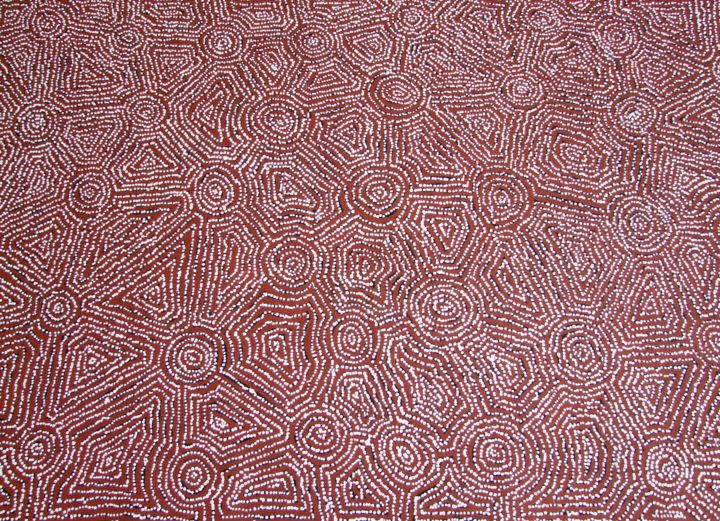Lease artwork "Tingari Cycle" by George Ward with an option to purchase
Paintings by George Ward are available for lease with purchase option
Select your monthly installments:
Leasing information request "Tingari Cycle"
Contact Us, a financing expert will get back to you within 24 hours:
Frequently Asked Questions
What are the advantages of leasing works of art?
- Financial Flexibility: You can enjoy exceptional, high-value works of art without a large initial investment.
- Tax Benefits: Receive potential tax benefits as rents can be deducted as a business expense.
How are the prices of monthly payments for leasing works of art set?
- The costs depend on the value of the work, the duration of the leasing contract, and any services included such as installation.
Can we buy the work after the leasing period?
- Yes, on ArtMajeur leasing contracts offer a purchase option at the end of the contract, allowing customers to acquire the work at a determined price (residual value).
How are the safety and insurance of works managed?
- Insurance during the duration of the rental contract is the responsibility of the customer. It is therefore important to check the details of your insurance contract to be sure that your leased works are covered in the event of damage.
What are the conditions for terminating the leasing contract before its end?
- Unless there are specific conditions, leasing contracts for works of art commit the client to payment of the entire price of the work; payments are therefore due until the end of the lease.

About the author
George Ward Tjungurrayi, a Western Desert artist, left an indelible mark on the contemporary Indigenous Australian art scene. Represented in major national collections such as the National Gallery of Victoria, Art Gallery of NSW, Supreme Court of Northern Territory, Musée des Arts d’Afrique et d’Océanie in Paris, and Groninger Museum in the Netherlands, his works resonate globally.
Born into the desert landscape, George Ward Tjungurrayi observed the artistic endeavors of his brothers, Yala Yala and Willy Tjungurrayi, both esteemed artists of Papunya Tula in Walungurru. It was in 1984 that George ventured into canvas painting, producing a series of elegantly classical concentric roundel works. After the passing of his brother Yala Yala in 1998, the responsibility to paint fell upon George's shoulders, marking the beginning of a significant phase in his artistic career.
Deeply immersed in the world of law and being a senior desert man, George Ward Tjungurrayi began to paint in earnest, developing a distinct style characterized by somber tones and profound intellect. His canvases, unlike anything seen before in the desert art movement, were cerebral and carried a unique gravitas. The subject matter often revolved around the significant lake site of Kaakuratintja (Lake MacDonald), a place traversed by a group of Tingari men in their eastward journey.
George's meticulous geometric drawings were complemented by rapid, shaking dotting techniques, creating a shimmering surface that added depth to his artworks. In 2004, his exceptional talent was recognized when he won the prestigious Wynne Prize for landscape painting at the Art Gallery of New South Wales.
Despite his reticent and silent demeanor, George Ward Tjungurrayi became one of the nation's most admired and keenly collected artists. His discomfort in English and unease in bustling towns like Alice Springs were indicative of his proud identity as a bush man. Commencing his painting career at Kintore around 1990, it was the passing of his older brother Yala Yala Gibbs in 1998 that led to George assuming the full weight of cultural and ceremonial authority. The transfer of authority marked a shift in George's artistic expression, with his paintings becoming more sophisticated and distinctive.
His larger paintings often depicted the Tingari or Dreaming stories from his ancestral country west of Kintore, adjacent to Lake MacDonald. These stories recounted the epic travels of the Creation Ancestors, shaping the land and its life forms. Having lived close to his land before encountering white settlers, George Ward Tjungurrayi's art reflected a deep connection to his roots.
George's legacy endures not only through the numerous galleries he exhibited in but also in the profound cultural narratives he conveyed through his art. The recognition of his artistic brilliance with the Wynne Prize solidified his place among the distinguished artists of the Western Desert, capturing the essence of his ancestral stories with sophistication and power.
-
Nationality:
AUSTRALIA

- Date of birth : unknown date
- Artistic domains: Represented by a Gallery,
- Groups: Contemporary Australian Artists Artists presented by a gallery


